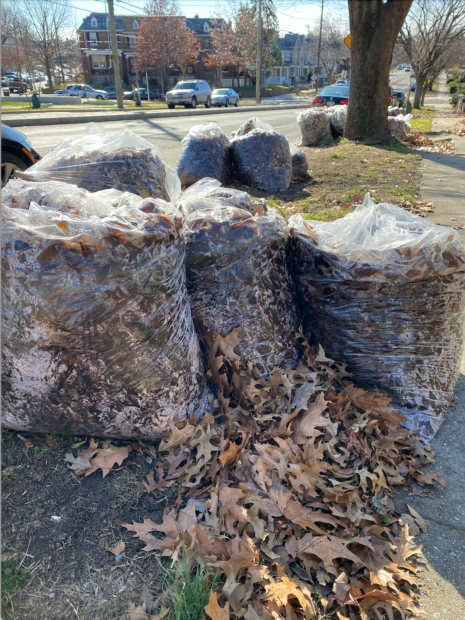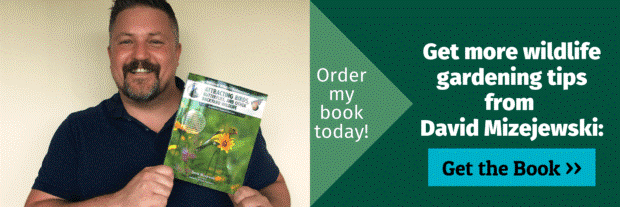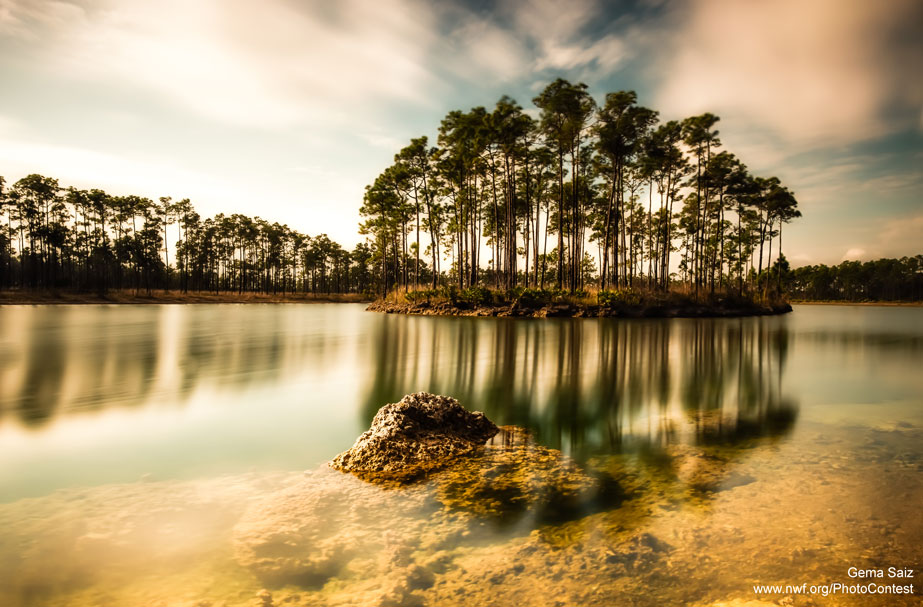We have much more to do and your continued support is needed now more than ever.
Pro-Tips for Leaving the Leaves

The National Wildlife Federation has designated October as Leave the Leaves Month!
As we head into autumn, many trees and shrubs shed their leaves or needles in preparation for their winter dormancy. The standard practice is to rake up or blow away all the leaves and bag them for the trash – but doing that causes pollution and further disconnects our cities, towns and neighborhoods from the local ecosystem. It also hurts wildlife.
What do fallen leaves have to do with wildlife? Turns out the fallen leaf layer that forms each autumn as plants drop their foliage is incredibly important habitat for many kinds of wildlife.
Here are my tips on how to “leave the leaves” the right way.
- Leaves and Lawns – Leaving a thick layer of leaves on your lawn will smother it. That’s not such a bad thing. Lawns offer little to no wildlife habitat and require intense amounts of water and polluting fertilizers and pesticides. Consider reducing the size of your lawn by adding some new garden beds this autumn and using fallen leaves as natural mulch.
- How Much? – A leaf layer of 3-5 inches deep is usually a good amount for most garden beds. Don’t pile them on top of your plants but instead put them around the plants to cover any open soil, just like any other kind of mulch. They’ll suppress weeds, preserve soil moisture and naturally compost and return nutrients directly to the root zone of your plants as they break down.

- What About Wind? – When you first move leaves to your beds, they might still blow around in the wind. Moisten them with a garden hose to weigh them down. The leaf layer actually acts as a natural sponge that helps retain soil moisture for your plants.
- Too Many Leaves? – If you have too many leaves, you can add them to your compost pile or simply make a big leaf pile in an out-of-the-way corner of your yard. They’ll break down and form a type of compost called leaf mold that can be added as natural fertilizer around your plants in the spring. A mulching mower will chop leaves on your lawn into tiny bits to enrich the soil. If your community has a leaf composting program, that’s a good option too. These methods eliminate much of the wildlife benefit of the leaves but it’s far better than throwing them away.

- Bagging Leaves – What you don’t want to do is bag the leaves and put them in the trash, where they end up in the landfill. Some 30 million tons of yard waste – much of it fallen leaves – get sent to landfills each year. When buried they break down in anaerobic conditions (meaning without oxygen) which produces methane, a potent greenhouse gas that contributes to global climate change. This doesn’t happen when leaves break down as mulch in a garden bed or compost pile.
- Rakes and Blowers – Use a rake! Leaf blowers are convenient, but they produce terrible air and noise pollution. If you must use a leaf blower, choose an electric model, which produce much less pollution compared to gasoline-powered blowers. Plus, raking is good exercise!
- Garden for Wildlife – Join the National Wildlife Federation’s Garden for Wildlife/Certified Wildlife Habitat® movement! Here’s a checklist of things you can do in your own yard or garden this fall to make it better for the birds, butterflies, bees and other wildlife.
Learn More!
Find out more about the benefits of fallen leaves in our Leave the Leaves content series:
- Seven Species That Need You to Leave the Leaves
- What to do With Fallen Leaves
- Why You Should Leave the Leaves
- Life in the Litter
- Six Excuses to Avoid Yardwork This Fall
- Five Simple Ways to Create Habitat This Fall
- Video: Five Tips on Leaving the Fall Leaves
Get Naturalist David Mizejewski’s Garden for Wildlife how-to book Attracting Birds, Butterflies and Other Backyard Wildlife to learn more.






















